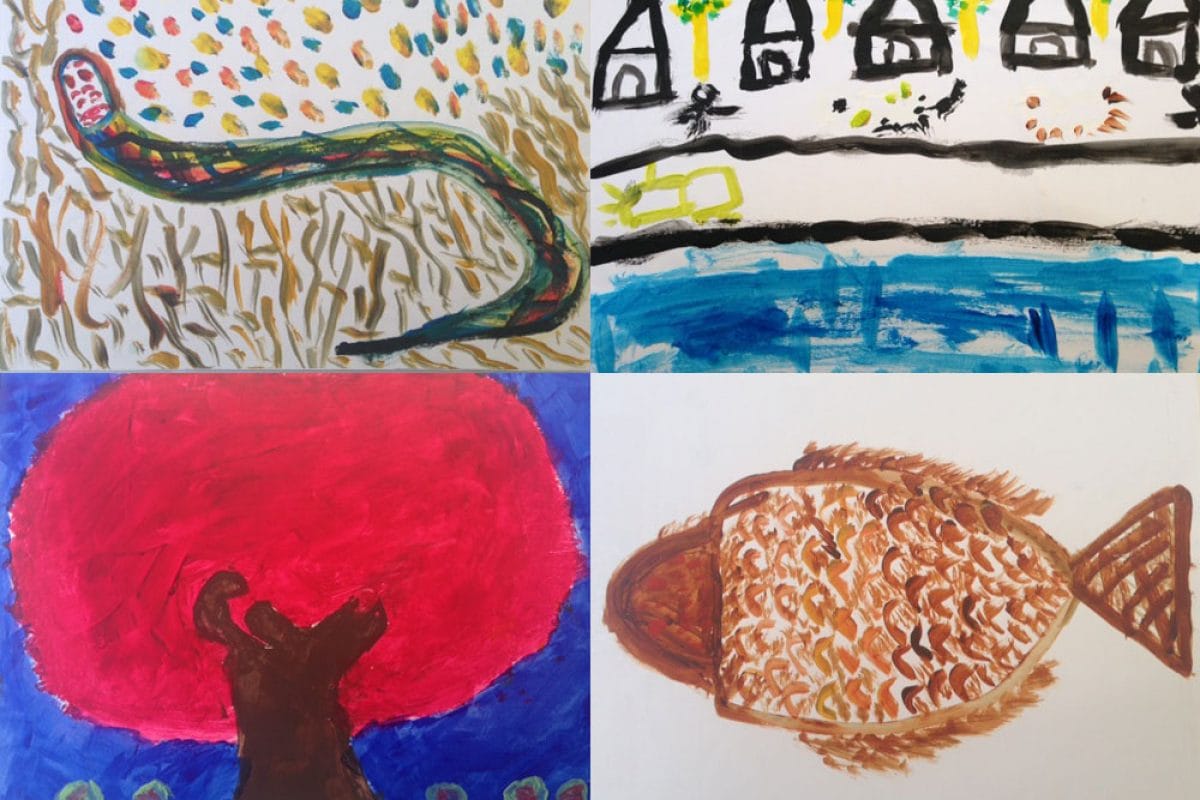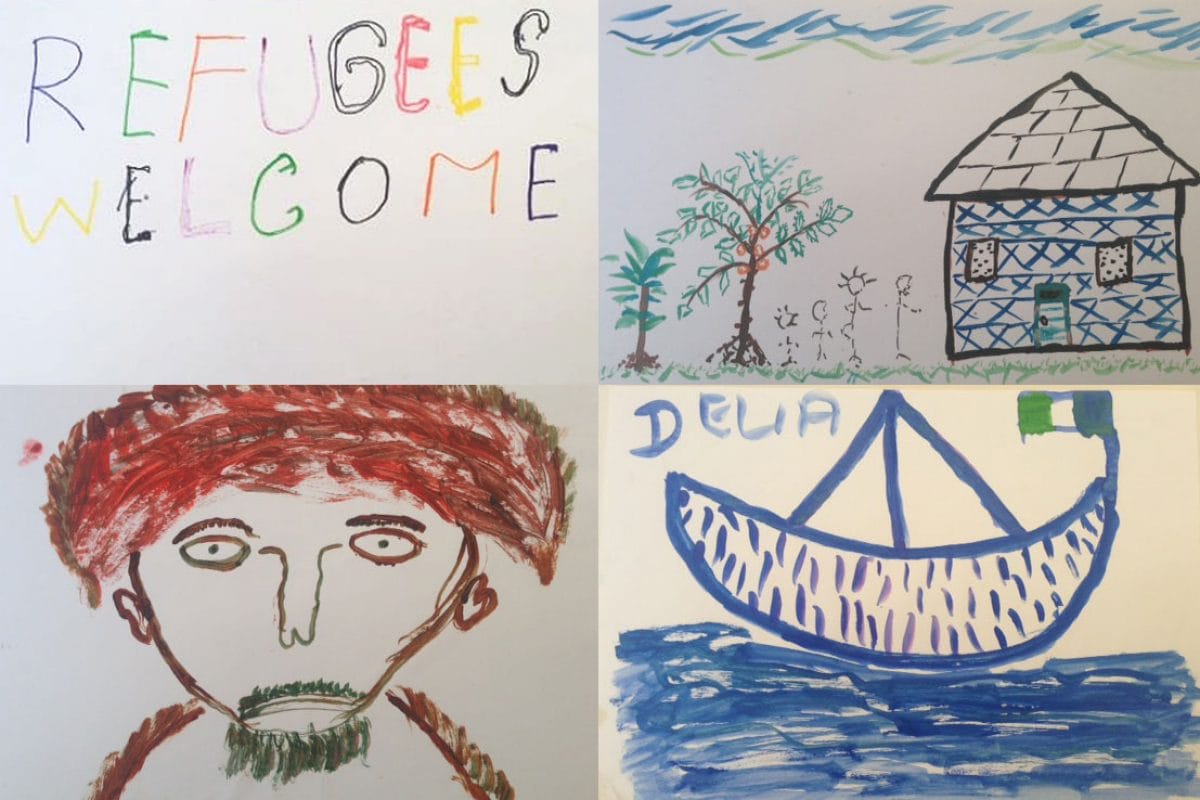Anne-Catherine Le Deunff is an Art Therapist working at Southwark Day Centre for Asylum Seekers, a centre for vulnerable refugees, migrants and asylum seekers.
Every Wednesday evening is different in Barry House.
Women and children join our group, settle for a while in the temporary accommodation (a few days, a week, a month) and then they go.
We get to know each other, we become friends or we simply learn how to pronounce each other’s name and then, one day, the woman or the child is gone to Leeds, Liverpool, Birmingham or Cardiff and you might not see each other again.
Once in a while, you are lucky enough to say, “Goodbye, good luck, take care of yourself…”
Every day we are assailed by images in the media showing the desperate movement of migrants arriving in Europe. These are people fleeing war, persecution or poverty. Leaving their country without hope of returning in the near future, they are separated from their homes, their relatives, their friends.
They are in constant fear of losing their loved ones back home.

Along the way, they have suffered abuse from people smugglers, they have got used to being rejected and mistreated and they are likely to have been confronted with death. Some images might stay in their mind and they might have trouble sleeping because of them.
After these traumatic events, they are in need of interventions to support them on a psychological level, as well as to help them get by in their new lives. Creative therapy provides some release or structure within which their experiences can be expressed.
At our arrival in Barry House, the children run towards us – excited, curious. They help us set up the Art Therapy Room. The mums might arrive later. They come on their own or with a friend or two, to share their stories with the group.
Soon, everyone starts painting or drawing, immersed in their imaginary world. We never stop giving sheets of paper on which they express themselves and communicate. They do not need to speak the same language; their images talk for them.

These regular sessions provide a measure of release and give some structure to the women and children’s lives. It enables them to give some meaning to their experience.
We often observe one or two sad children gazing at us in silence. You can guess that they are affected by their parents’ anxiety and depression. They might even have to become their mother and father’s carer as they learn English quickly. In our group, we try to offer them a space to play, showing these children a way to enter a world where they are in control. We are struck by their need to be treated as individuals after their experiences finding their way to our country.
Art demands active participation therefore it helps with combatting apathy. It enhances wellbeing and offers the migrants some time to stop worrying. It might help contain and calm a distressed adult, a restless child.
Many women might have never been given the opportunity to create.
They might never have used paints before and might be reluctant to start. When they feel trusting enough of the environment, and of us, only then can they allow their emotions to express themselves. They can also use this time to dream and explore in a secure and safe space.
Children who may be seen to have lost their childhoods are provided a positive and creative experience. They are able to share stories and situations from their past, using the artistic medium in whichever way they wish, in a safe and nurturing environment.

They will be listened to and the therapist will validate their experiences, enabling them to move forward, to start to heal. Later on, those children who have been helped to survive and cope will integrate into our schools and often thrive.
In Barry House, it is not possible to start proper therapy as there is not enough time to go in depth and talk about the women’s inner lives – the confusion and despair that we see in their eyes.
We offer mothers this space and time to breathe, bond with their children and be a mum like any other mum. We would like to think that we provide some opportunity for creative growth.
One woman from Yemen invited us to her bedroom where her new born baby boy was being blessed. She had been attending our group regularly, all through her pregnancy. We were pleased to see that she decorated her room with her refined and colourful artwork.
For me, she was not a victim anymore but a real artist, proud of her work.


